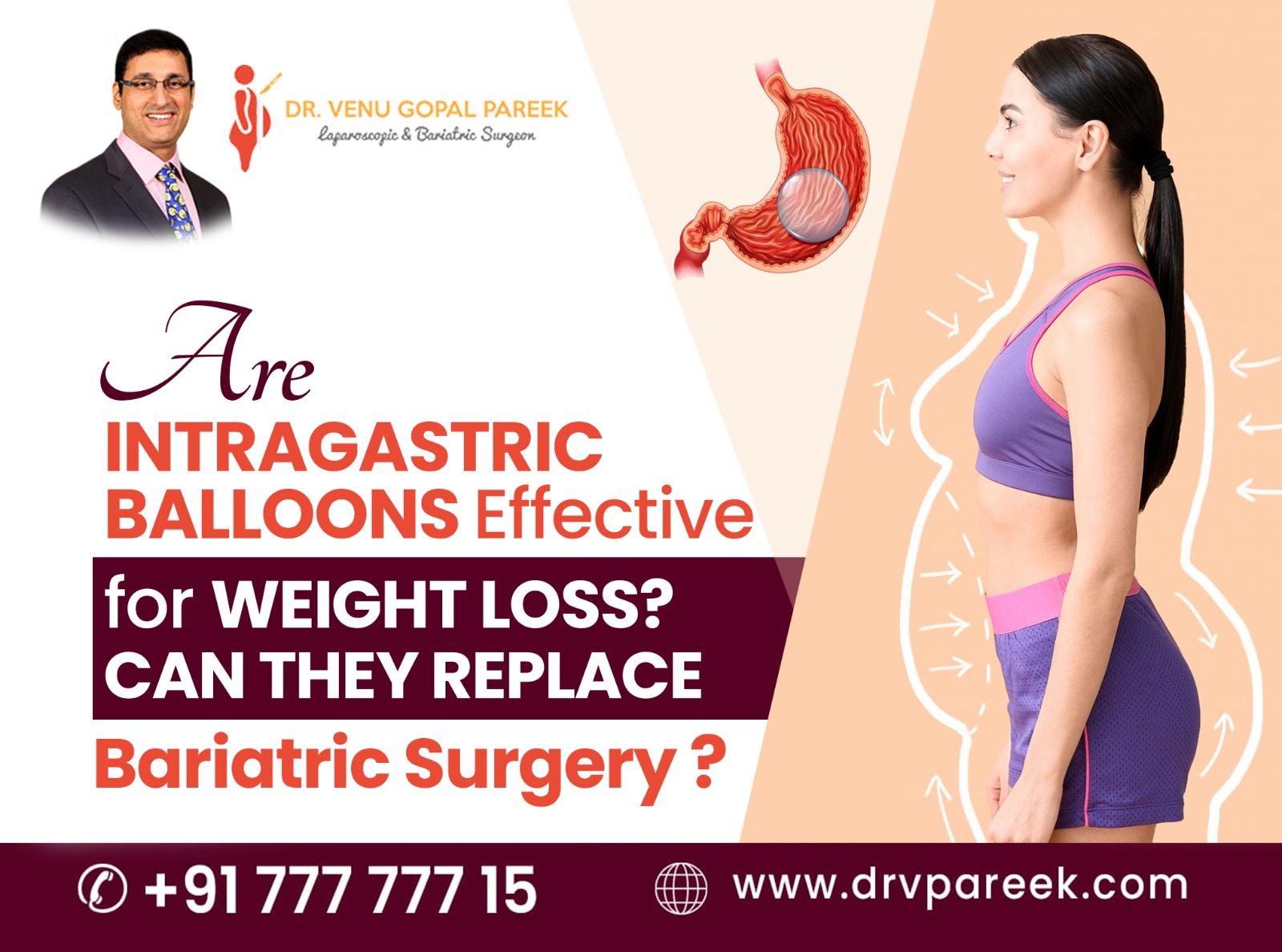
Are intragastric balloons effective for weight loss? Can they replace bariatric surgery?
Intragastric balloon surgery is an endoscopic procedure and a non-surgical treatment for obesity. It is a minimally invasive weight loss program, especially for moderately obese people. The procedure involves the insertion of a balloon into the stomach.
Who is eligible for an intragastric balloon?
Doctors often suggest bariatric surgeries when the BMI is ≥ 35 kg/m2 and in some cases, people whose BMI is ≥ 32.5 kg/m2 can also opt for bariatric surgeries. If their BMI is ≤ 27.5 kg/m2, certain changes in their lifestyle might be enough to help them lose their excess weight. However, intragastric balloon insertion is commonly suggested when BMI is between 27.5kg/m2 and 32.5 kg/m2, and patients fail to lose their excess weight through lifestyle modifications.
This doesn’t mean people with high BMI are not allowed to undergo this procedure. It is a viable option even for those whose BMI is ≥ 32.5 kg/m2, who usually require bariatric surgery. Usually, patients lose 10% to 15% of their body weight during the six-month gastric balloon program.
The intragastric balloon insertion procedure
There are different types of gastric balloons, which include liquid-filled Orbera balloons, Spatz balloons, gas-filled Heliosphere and Obalon balloons, etc. For any balloon procedure, an upper gastrointestinal endoscopy is necessary to determine whether there are any complications, like large hiatal hernia, gastric ulcers, or reflux esophagitis, that interfere with balloon insertion.
The procedure can be done with or without general anaesthesia. The balloon initially looks like a tablet, which is sent into the stomach after the upper GI endoscopy. A tube and guide wire are attached to the tablet, which is used to inflate the silicon balloon after crossing the gastroesophageal junction. This balloon is filled with a mixture of 400 to 600 ml of saline and methylene blue through the tube attached to it. The quantity of liquid that can be filled will be decided by the surgeon, considering various factors. After the balloon is filled with liquid, the tube is pulled out and sealed with a valve.
Orbera balloon has a life span of 6 months in our stomach, and it is an FDA-approved balloon.
Spatz is another type of gastric balloon that is adjustable. It can be filled more than once through the elastic tube attached to the balloon. Initially, it is filled with 300 to 400 ml liquid and once the patient gets used to it in the stomach, it can be refilled to increase the volume of the balloon to 600 to 800 ml.
In future, the liquid volume can be adjusted depending on the weight loss expectations or intolerance of the balloon by the patient.
When the balloon’s life is over, it can either dissolve on its own or be taken out using an endoscopy.
How does an intragastric balloon work?
With this procedure, weight loss is achieved by restricting the consumption of food. It doesn’t have any effect on hormonal changes. So compared to bariatric surgeries, IGBs are less effective.
Post-surgical diet is almost similar to bariatric surgery; for the first two weeks, the patient will be on a liquid diet, and for the next few weeks, a healthy soft diet, and then a healthy normal diet.
Can intragastric balloons replace bariatric surgery?
At present, intragastric balloons might not be able to replace bariatric surgeries. Generally, IGB is best for minimal and temporary weight loss. For extremely obese people, bariatric surgery is the best weight loss option.
Outcomes of this procedure
Almost every patient can lose 10% to 15% of their total body weight with the help of IGB combined with certain lifestyle changes. For even more better outcomes, oral semaglutide is also suggested by some patients. There are incidents where some patients have lost more than 30 kg of weight. However, remember, everyone can’t lose the same volume of weight. Some people might lose very little volume of weight, while others lose the desired volume of weight, and some may not lose any weight.
As it is a non-surgical procedure, it leaves no scar. The procedure is completely reversible, unlike bariatric surgeries. It is a safe and effective daycare procedure. Any surgery comes with complications, and in this surgery, there are some rare complications like balloon leaks or deflation. If you have a balloon inside your stomach and if you observe symptoms like light blue urine, consult your surgeon immediately. The surgeon might remove the balloon by doing an endoscopy.
If you are looking for the best weight loss surgeon in Hyderabad, consult Dr. Venugopal Pareek, one of the best bariatric and laparoscopic surgeons in Hyderabad. In his 18+ years of experience, he has done over 550 successful bariatric surgeries and 9000 laparoscopic surgeries in Hyderabad. Call +91 91777 77715 for a doctor’s appointment.







